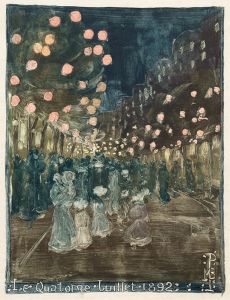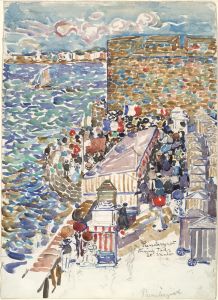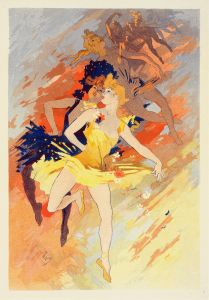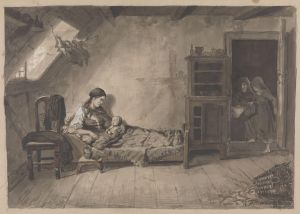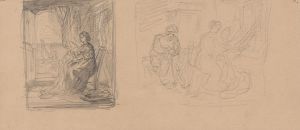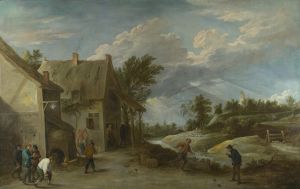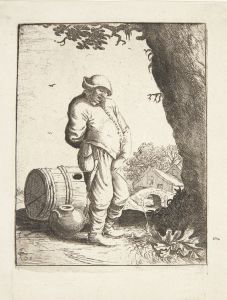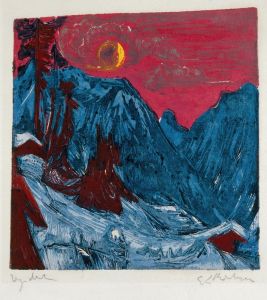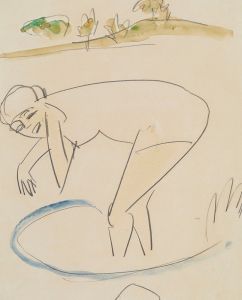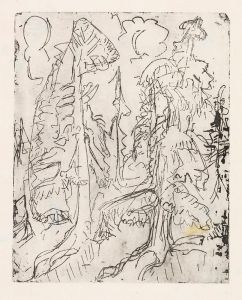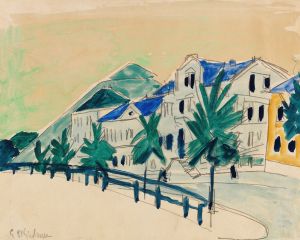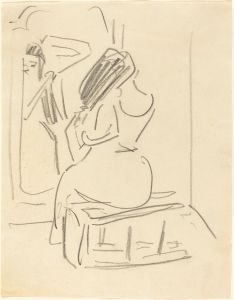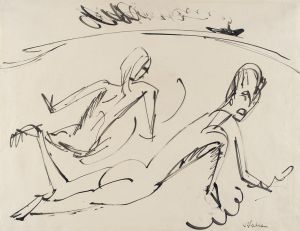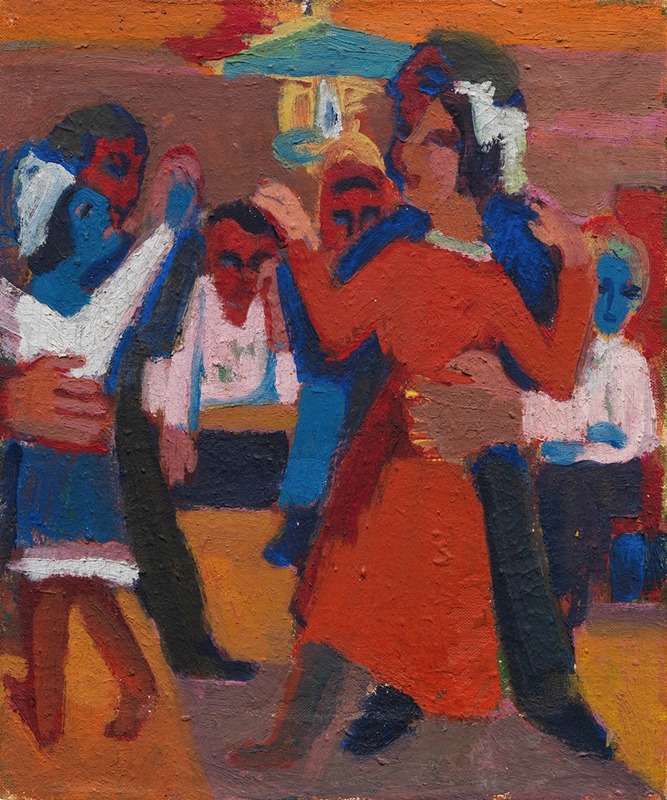
Bauerntanz
A hand-painted replica of Ernst Ludwig Kirchner’s masterpiece Bauerntanz, meticulously crafted by professional artists to capture the true essence of the original. Each piece is created with museum-quality canvas and rare mineral pigments, carefully painted by experienced artists with delicate brushstrokes and rich, layered colors to perfectly recreate the texture of the original artwork. Unlike machine-printed reproductions, this hand-painted version brings the painting to life, infused with the artist’s emotions and skill in every stroke. Whether for personal collection or home decoration, it instantly elevates the artistic atmosphere of any space.
Ernst Ludwig Kirchner's Bauerntanz (translated as "Peasant Dance") is a painting created by the German Expressionist artist, who was a founding member of the influential art movement Die Brücke (The Bridge). Kirchner, known for his bold use of color, dynamic compositions, and emotive style, sought to break away from traditional artistic conventions and explore themes of modernity, primitivism, and the human experience. Bauerntanz reflects his interest in capturing the vitality and raw energy of rural life, a subject that contrasts with his more well-known depictions of urban scenes.
The painting depicts a lively scene of peasants dancing, characterized by Kirchner's signature use of exaggerated forms, angular lines, and vibrant, non-naturalistic colors. These stylistic choices emphasize movement and emotion rather than realistic representation. The work is believed to have been inspired by Kirchner's time spent in rural areas, where he sought refuge from the pressures of modern city life and found inspiration in the simplicity and authenticity of traditional peasant culture.
Kirchner's art often reflected his fascination with the interplay between people and their environments. In Bauerntanz, the figures are intertwined with their surroundings, creating a sense of unity and rhythm. The painting exemplifies the Expressionist goal of conveying subjective emotions and experiences rather than objective reality. It also highlights Kirchner's interest in folk traditions and his desire to reconnect with a more primal and unspoiled way of life, which was a recurring theme in his work.
The exact date of creation for Bauerntanz is not definitively documented, but it is consistent with Kirchner's broader body of work during the early 20th century, particularly in the years leading up to World War I. This period was marked by a growing disillusionment with industrialization and a romanticized view of rural life among many artists and intellectuals.
As with much of Kirchner's oeuvre, Bauerntanz reflects the influence of non-European art, particularly African and Oceanic art, which Kirchner and other members of Die Brücke admired for its perceived authenticity and directness. This influence is evident in the simplified forms and expressive distortions present in the painting.
Today, Bauerntanz is recognized as an important example of Kirchner's exploration of rural themes and his contribution to the Expressionist movement. The painting is held in a private collection or museum, though specific details about its current location and provenance are not widely available.





